Engine Flush: Good or Bad? A Mechanic’s Guide to Oil Cleaning
- What Is an Engine Flush?
- Why Drivers Consider Engine Oil Flush
- Is Engine Flush Good or Bad? Pros and Cons
- Benefits of Engine Flush
- Risks and Downsides of Engine Flushing
- Is Engine Flush Safe for Modern Engines?
- When You Should (and Shouldn’t) Do an Engine Oil Flush
- Alternatives to Engine Flushing
- How We Perform Safe Engine Flush in Abu Dhabi
What Is an Engine Flush?
A good engine flush is an aftermarket chemical additive, designed to remove deposits robbing performance, sludge, and other gunk from your engine. When sludge settles, it can clog narrow oil passages or the oil pickup tube screen, limiting oil flow to crucial engine parts, especially the upper valve train. Regularly flushing your engine helps maintain engine efficiency and keeps running smoothly over time.
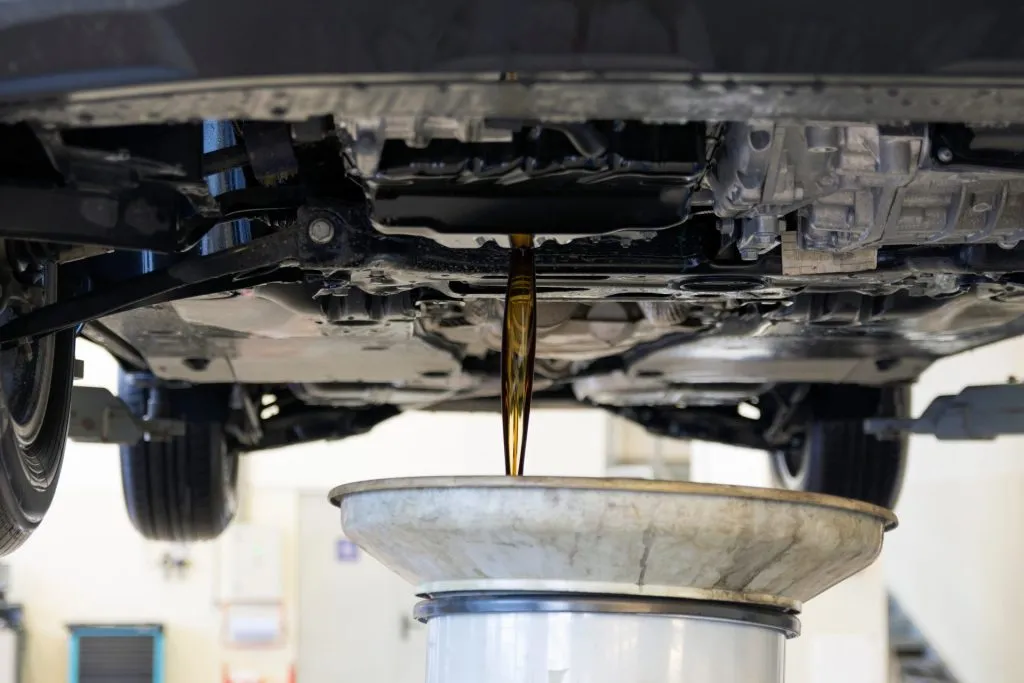
Why Drivers Consider Engine Oil Flush
Here are the reasons many car owners choose to get an engine flush:
- Oil contamination: Old or dirty oil collects sludge and debris that circulates through the system and sticks to engine components.
- Oil breakdown: Over time, engine oil loses its ability to lubricate and protect, especially in high-mileage vehicles, which can lead to increased engine wear.
- Sticky valves: Deposits can build up and cause valve movement issues; a flush helps by loosening sticky valves.
- Combustion chamber deposits: Gunk from incomplete combustion may settle in the chamber, affecting performance.
- Clogged upper valve train: Buildup in the upper valve train can restrict oil flow to critical areas.
- Buying a used car: A flush removes hidden sludge from an engine with an unknown maintenance history, ensuring a clean engine.
- Better fuel economy: Cleaner internal components reduce friction and improve efficiency.
- Preventive engine maintenance: Regular flushing supports the long-term health of your engine.
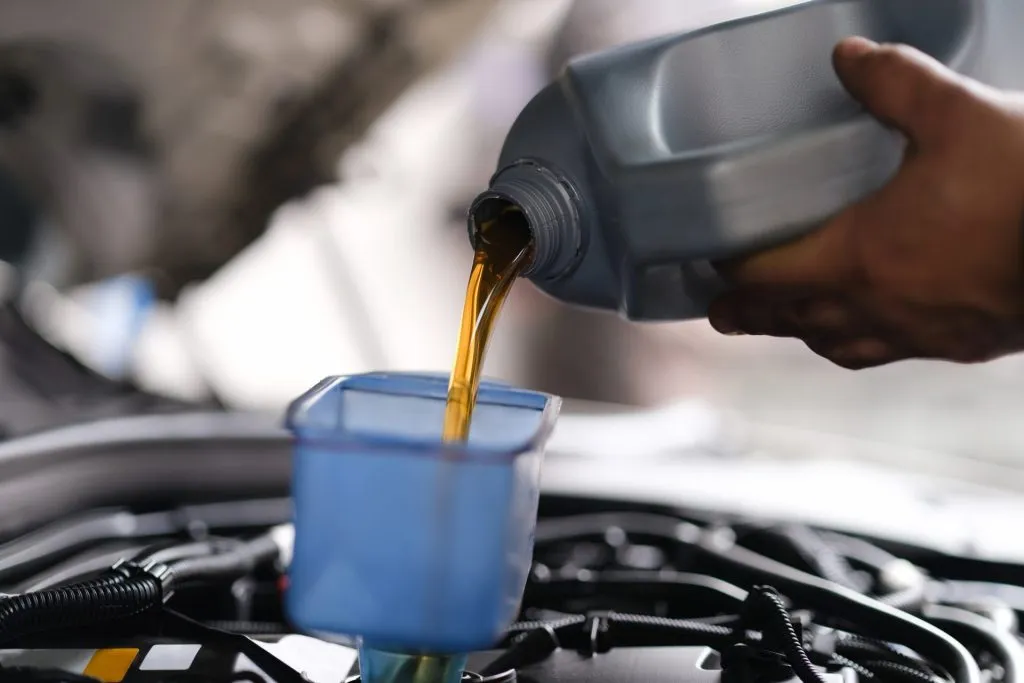
Is Engine Flush Good or Bad? Pros and Cons
An engine flush can be a helpful part of car maintenance, but it’s not suitable for every engine. It’s important to weigh all the pros and cons. Let’s review the pros:
- Removes sludge and deposits: Engines collect gunk that sticks to internal parts over time. A flush helps dislodge these with a cleaning solution, promoting better oil flow and overall engine cleaning.
- Improves fuel efficiency: A cleaner engine runs more smoothly, which can lead to improved fuel economy.
- Protects oil filter: By removing built-up sludge, a flush prevents your oil filter from clogging prematurely.
- Useful for a high-mileage engine: Older engines with inconsistent maintenance can benefit from a carefully performed flush to refresh the system.
But before you decide, check the cons list:
- Worn or cracked seals may be damaged: The cleaning process can strip away the buildup that had been masking minor leaks.
- Not recommended for neglected engines: If an engine hasn’t been maintained for a long time, a sudden flush might immediately loosen too much debris, potentially clogging oil passages or causing damage.
- Temporary fix: An engine flush doesn’t solve root problems like excessive wear or poor maintenance history.
Call us +971 52 502 3530 and request a consultation before making any decisions, especially if you have a high-mileage engine or suspect issues with your engine seals.
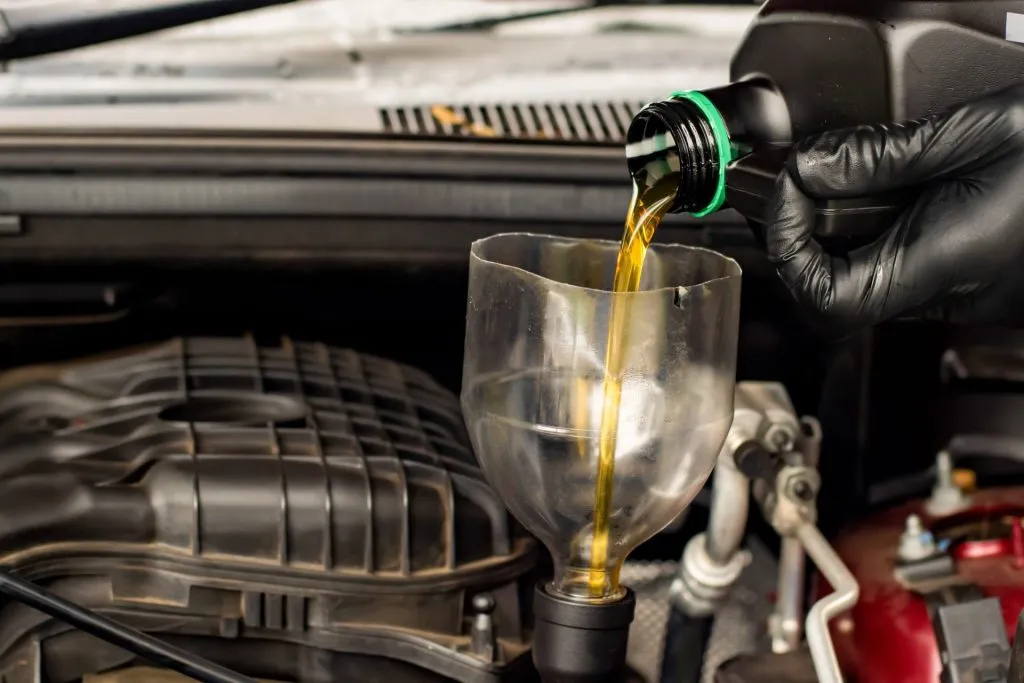
Benefits of Engine Flush
Here’s how engine flush can improve your car’s performance:
- Removes engine sludge: Over time, dirty oil leaves thick engine sludge that sticks to internal parts. A flush helps dissolve sludge and build-up deposits.
- Restores oil circulation: Flushing clears clogged passages, allowing oil to reach all moving parts more efficiently.
- Prepares for oil type switch: If you plan to switch to synthetic or a different oil type, an engine flush can clean out the old residue and ensure a smoother transition.
- Deeper cleaning option: For engines with serious buildup, you can buy engine and transmission flush products or perform a cylinder head pre-cleanup for more comprehensive results.
Risks and Downsides of Engine Flushing
Before deciding to perform an engine flush, review this list of potential risks:
- Sludge deposits can break loose too quickly during the flush, turning into floating debris instead of dissolving properly.
- These dislodged particles can clog push rod openings or other narrow oil passages, restricting oil flow to essential components.
- In older engines (especially those with worn seals or built-up gunk), flushing can reduce engine compression if masking wear deposits are removed.
- The wrong engine cleaning solution may be too aggressive and damage internal parts or seals.
- Even high-quality products like Amsoil engine flush should be used cautiously in high-mileage or delicate engines.
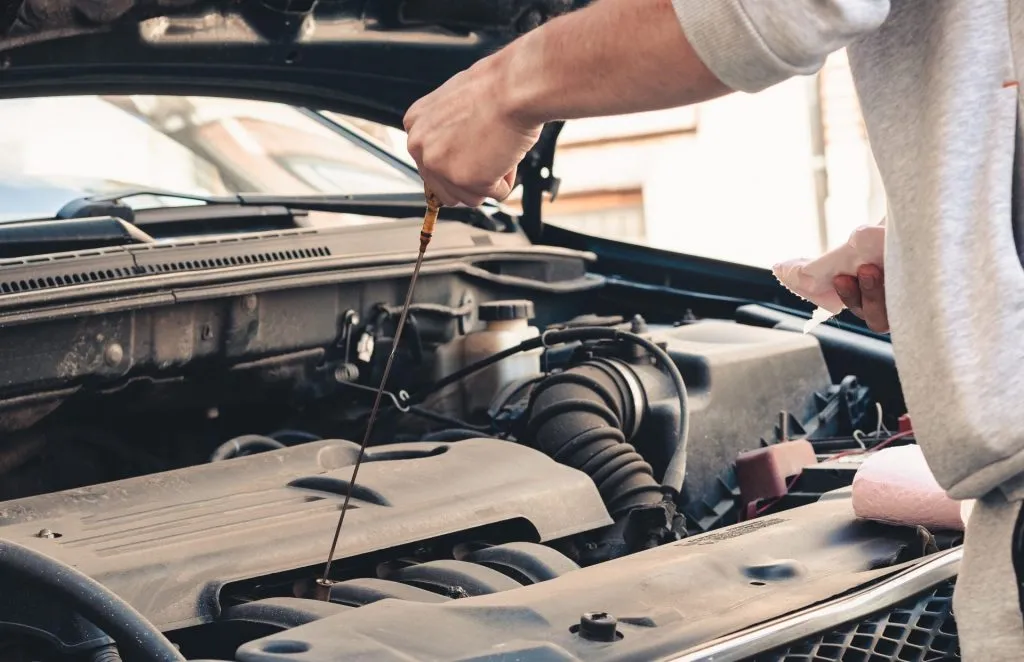
Is Engine Flush Safe for Modern Engines?
Today’s engines, including those with turbocharging and start-stop systems, run with tighter tolerances and more advanced parts. While an engine flush can be safe when done correctly, it’s best to consult a trusted mechanic, especially if your engine has oil leaks or shows signs of internal wear. In some cases, flushing may dislodge deposits that are sealing minor leaks, potentially worsening the issue.
When You Should (and Shouldn’t) Do an Engine Oil Flush
Perform an engine flush if:
- Your engine is heavily contaminated due to neglected maintenance or poor-quality oil.
- You’ve recently bought a used car and don’t know if it was serviced with oil regularly.
- You want to clear harmful deposits before switching to synthetic oil or after engine repairs (like replacing valve springs).
Do not flush if:
- The engine has high mileage but runs fine and shows no symptoms, so stirring up old gunk can do more harm than good.
- There are no signs of sludge, and you’ve maintained it with proper oil changes. The motor has older seals or weak components that solvents might damage if poured through the engine’s oil filler port.
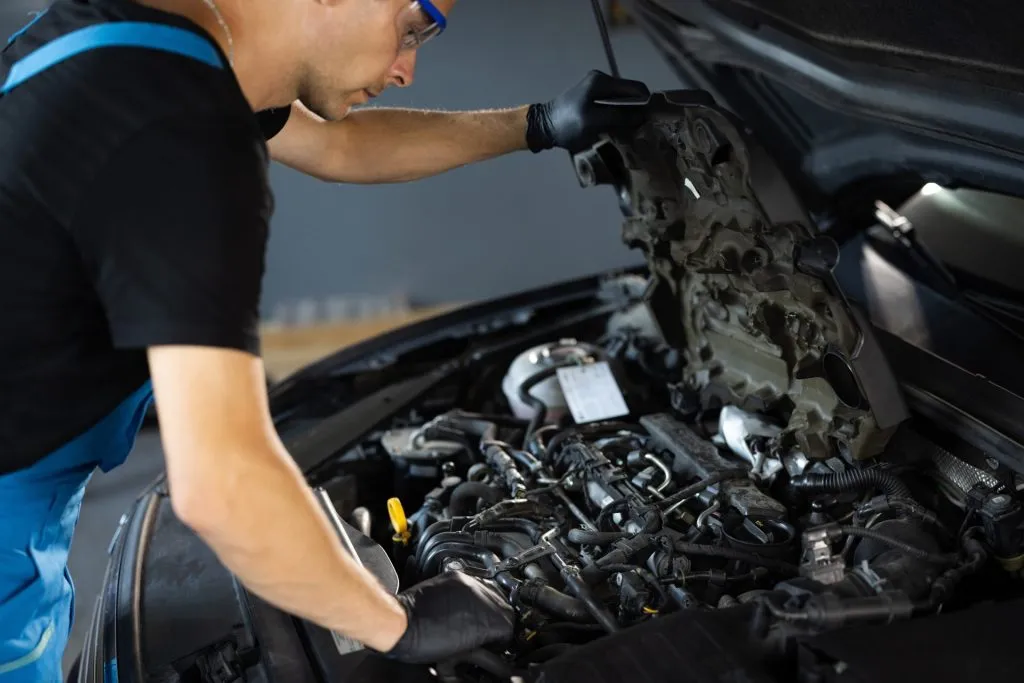
Alternatives to Engine Flushing
If you’re unsure about doing an engine flush, safer alternatives still help maintain engine health and prevent excessive oil consumption. Instead of a complete car engine flush, you can consider soft flushing with gentle additives, regular oil change intervals using high-quality oil, or switching to motor oils that contain built-in cleaning agents. These techniques effectively clean the engine, minimize buildup, and promote long-term performance without the risks linked to aggressive flushing.
How We Perform Safe Engine Flush in Abu Dhabi
The process is simple, but professional mechanics should do it to avoid potential damage and ensure enhanced engine performance:
- We pour engine flush products into the oil-filler port and keep the motor running for 10-15 minutes.
- The flush mixes with the oil and circulates through the engine, helping dissolve sludge and clean out harmful deposits, including those around piston ring lands. This process can reduce exhaust emissions and sometimes help manage issues when the engine begins leaking oil due to sludge buildup and aging seals, contributing to extended engine life.
- Next, drain the oil (along with most of the gunk), replace the oil filter, add fresh oil, and get back on the road.
At Golden Horse, we use only safe, tested formulations and always check the engine’s condition beforehand. Our specialists take extra care to monitor for signs of sludge formation inside and guarantee the flush won’t disrupt fragile components:
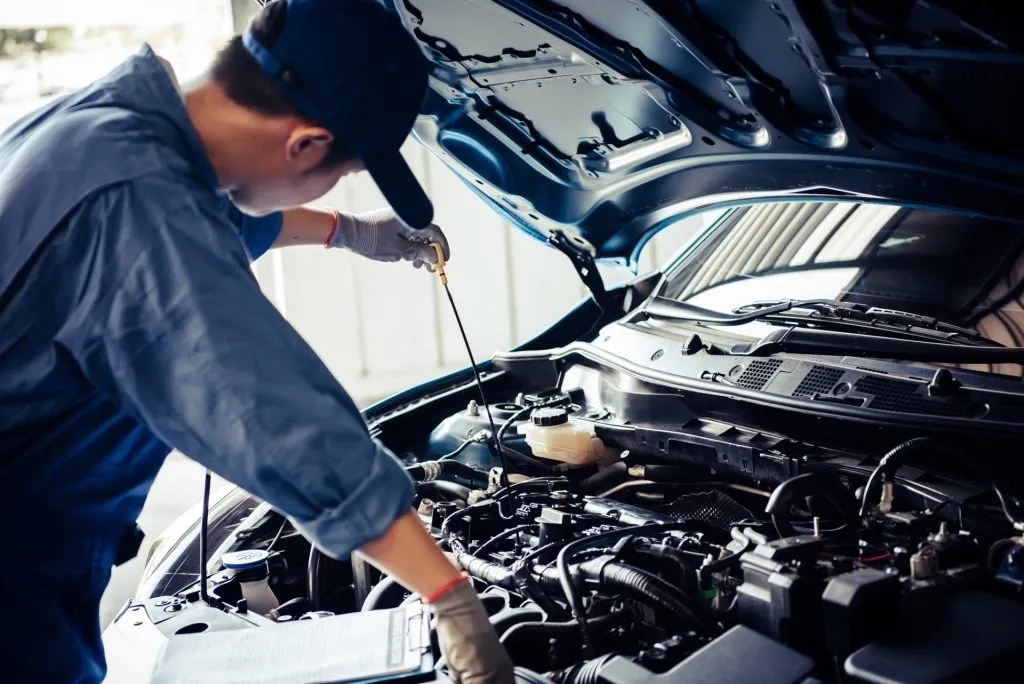
- Inspect used oil for sludge or metal particles.
- Check oil pressure and flow for proper circulation.
- Evaluate engine temperature for irregularities.
- Use diagnostic tools to assess seals and components before the flush.




